 W
WThe Severan dynasty was a Roman imperial dynasty, which ruled the Roman Empire between 193 and 235. The dynasty was founded by the general Septimius Severus, who rose to power as the victor of the Civil War of 193–197.
 W
WAnnia Aurelia Faustina was an Anatolian Roman noblewoman. She was briefly married to the Roman emperor Elagabalus in 221 and thus a Roman empress. She was Elagabalus' third wife.
 W
WThe antoninianus, or pre-reform radiate, was a coin used during the Roman Empire thought to have been valued at 2 denarii. It was initially silver, but was slowly debased to bronze with a minimal silver content. The coin was introduced by Caracalla in early 215 AD. It was silver, similar to the denarius except that it was slightly larger and featured the emperor wearing a radiate crown, indicating it was a double denomination. Antoniniani depicting women featured the bust resting upon a crescent moon.
 W
WJulia Aquilia Severa was the second and fourth wife of Roman emperor Elagabalus. She was the daughter of Quintus Aquilius. The praenomen of Julia was given to her after becoming an empress.
 W
WThe Arch of Septimius Severus at the northwest end of the Roman Forum is a white marble triumphal arch dedicated in 203 to commemorate the Parthian victories of Emperor Septimius Severus and his two sons, Caracalla and Geta, in the two campaigns against the Parthians of 194/195 and 197–199.
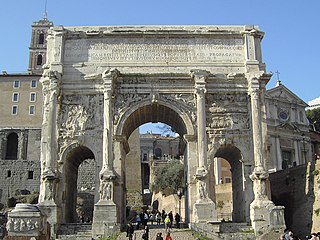 W
WSeveran art is art production by the Roman Empire under the Severan dynasty, usually taken as running from 193 to 235, through the emperors Septimius Severus, Caracalla, Heliogabalus and Alexander Severus. Official Roman art of the military anarchy which followed, ending in 253 with Gallienus, has no character of its own and so can be seen as a continuation of Severan art, and so that art can be seen as running for the whole first half of the 3rd century.
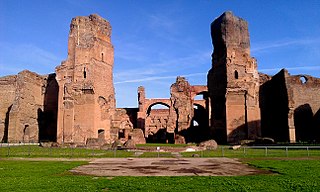 W
WThe Baths of Caracalla in Rome, Italy, were the city's second largest Roman public baths, or thermae, likely built between AD 212 and 216/217, during the reigns of emperors Septimius Severus and Caracalla. They were in operation until the 530s and then fell into disuse and ruin.
 W
WThe Battle at the Harzhorn took place in the early 3rd century between Germanic and Roman troops near the Harzhorn hill between the towns of Kalefeld and Bad Gandersheim, in the state of Lower Saxony, Germany.
 W
WCaracalla, formally known as Antoninus, was Roman emperor from 198 to 217. He was a member of the Severan dynasty, the elder son of Septimius Severus and Julia Domna. Co-ruler with his father from 198, he continued to rule with his brother Geta, emperor from 209, after their father's death in 211. His brother was murdered by the Praetorian Guard later that year, supposedly under orders from Caracalla himself, who then reigned afterwards as sole ruler of the Roman Empire. He found administration to be mundane, leaving those responsibilities to his mother, Julia Domna, to attend to. Caracalla's reign featured domestic instability and external invasions by the Germanic peoples.
 W
WDiadumenian was the son and co-ruler of Roman Emperor Macrinus. His mother was Nonia Celsa, whose name may be fictitious. Diadumenian became Caesar in May 217. Elagabalus revolted in May 218, and Diadumenian was elevated to co-emperor. After Macrinus was defeated in the Battle of Antioch, on 8 June 218, Diadumenian was sent to the court of Artabanus V to ensure his safety; however, he was captured and executed along the way, in late June.
 W
WElagabalus or Heliogabalus, officially known as Antoninus, was Roman emperor from 218 to 222. His short reign was conspicuous for sex scandals and religious controversy. He was cousin to the emperor Caracalla, and came from a prominent Arab family in Emesa (Homs), Syria, where in his early youth he served as head priest of the namesake sun god Elagabalus. After the death of Caracalla, Elagabalus was raised to the principate at 14 years of age in an army revolt instigated by his grandmother, Julia Maesa, against Caracalla's short-lived successor, Macrinus. As a private citizen, he was probably named Varius Avitus Bassianus. Upon becoming emperor he took the name Marcus Aurelius Antoninus, and became known after his native god only after his death.
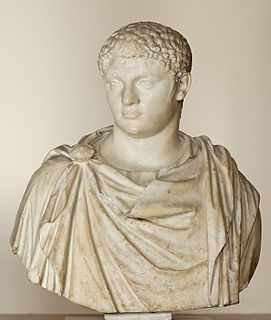 W
WGeta was Roman emperor with his father Septimius Severus and older brother Caracalla from 209, when he was named Augustus like his brother, who had held the title since 198. Severus died in 211, and although he intended for his sons to rule together, they proved incapable of sharing power, culminating with the murder of Geta in December of that year.
 W
WJulia Domna was Roman empress consort from 193 to 211. She was born in Emesa in Roman Syria to an Arab family of priests of the deity Elagabalus. In 187, she married Libyan-born Septimius Severus, who at the time was governor of the Roman province of Gallia Lugdunensis. They had two sons, Caracalla and Geta. A civil war over the Roman throne broke out in 193, and shortly afterwards Severus declared himself emperor. The war ended in 197 with the defeat of the last of Severus's opponents.
 W
WJulia Soaemias Bassiana was a Syrian noblewoman and the mother of Roman emperor Elagabalus, who ruled over the Roman Empire from 218 to 222. She was also de facto regent during her son's reign with her mother, Julia Maesa, and ruled Rome through and with the young emperor. However, the rule of mother and son by the seditions of the her influential mother Julia Maesa ended. She was born and raised in Emesa, Syria and through her mother was related to the Royal family of Emesa, and through marriage, to the Severan dynasty of Ancient Rome.
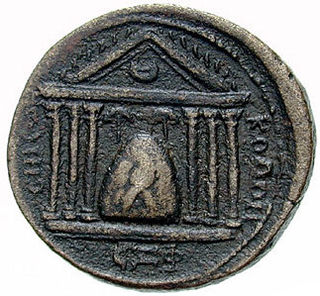 W
WGaius Julius Bassianus or Bassus, also known as Julius Bassianus was an Arab high priest of Elagabalus at the Temple of the Sun in Emesa, Syria, where this solar deity was worshipped in a shape of a black stone. The name Elagabalus derives from Ilāh and gabal, resulting in "the God of the Mountain," the Emesene manifestation of the deity.. Bassianus was a member of the Royal family of Emesa, which was a part of the Arab aristocracy in this client kingdom of the Roman Empire. The beginning of his priesthood is unknown, but by 187 he was a high priest at Emesa. Bassianus was a son of a Julius and his paternal uncle was Julius Agrippa, who served as a Primipilaris.
 W
WMacrinus was Roman Emperor from April 217 to 8 June 218. He reigned jointly with his young son Diadumenianus. Macrinus was by origin a Berber from Mauretania Caesariensis. A member of the equestrian class, he became the first emperor who did not hail from the senatorial class and was the first emperor from Mauretania. Before becoming emperor, Macrinus served under Emperor Caracalla as a praetorian prefect and dealt with Rome's civil affairs. He later conspired against Caracalla and had him murdered in a bid to protect his own life, succeeding him as emperor.
 W
WJulia Maesa was a member of the Severan dynasty of the Roman Empire who was the major power behind the throne in the reigns of her grandsons, Elagabalus and Severus Alexander, as Augusta of the Empire from 218 to her death. Born in Emesa, Syria, to an Arab family of priests of the deity Elagabalus, she was the daughter of Julius Bassianus and the elder sister of Roman empress Julia Domna.
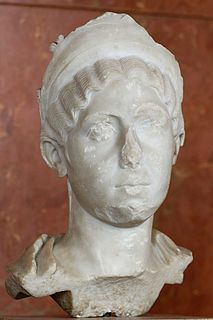 W
WJulia Avita Mamaea was a Syrian noble woman and a Roman regent of the Severan dynasty. She was the mother of Roman Emperor Alexander Severus and served as regent of Rome during his minority, de facto during his reign and even became a partner in his rule at the end of his reign. Mamaea herself was the one of the few ancient Roman women in Roman history to equally share the power of running the entire empire with Roman Emperor legally and enjoyed equal honors with the emperor.
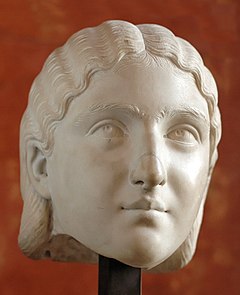 W
WGnaea Seia Herennia Sallustia Barbia Orbiana, usually known as Sallustia Orbiana, was a third century Roman empress, with the title of Augusta as the wife of Severus Alexander from AD 225 to 227. The emperor married her in late 225, following the death of his grandmother. Severus was around sixteen years of age at this time. She was known for her beauty, which was captured in multiple works of art. A victim of the jealousy of Julia Mamaea, the emperor's mother, Orbiana was divorced and exiled to Libya in 227.
 W
WAemilius Papinianus, simply rendered as Papinian in English, was a celebrated Roman jurist, magister libellorum, attorney general and, after the death of Gaius Fulvius Plautianus in 205 CE, praetorian prefect.
 W
WPublia Fulvia Plautilla, Fulvia Plautilla or Plautilla was the wife of the Roman emperor Caracalla, her paternal second cousin. After her father was condemned for treason, she was exiled and eventually killed, possibly on Caracalla's orders. She was related to Julius Caesar's first wife Cornelia.
 W
WMarcus Aurelius Severus Alexander was Roman emperor from 222 to 235, and the last from the Severan dynasty.
 W
WLucius Septimius Severus was a Roman emperor from 193 to 211. He was born in Leptis Magna in the Roman province of Africa. As a young man he advanced through the customary succession of offices under the reigns of Marcus Aurelius and Commodus. Severus seized power after the death of Emperor Pertinax in 193 during the Year of the Five Emperors.
 W
WUlpian was a prominent Roman jurist born in Tyre. He was considered one of the great legal authorities of his time and was one of the five jurists upon whom decisions were to be based according to the Law of Citations of Valentinian III.